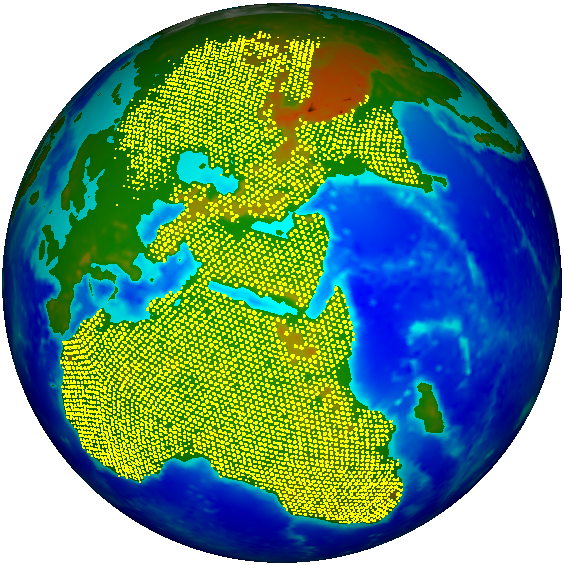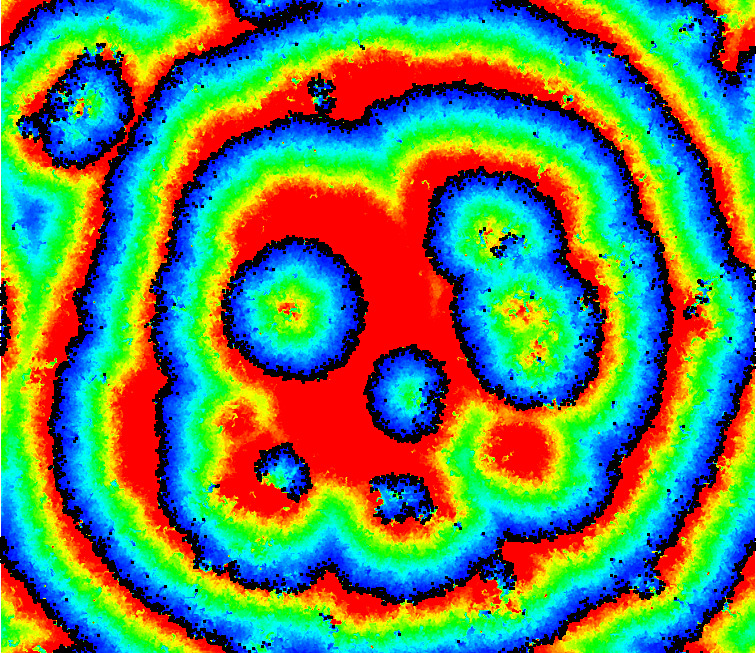What is QHG?¶
QHG is a framework for agent-based simulations, initially used to model the dispersal of homo sapiens out of Africa. For these simulation the agents were homo sapiens and neanderthal individuals moving and interacing on a quite ralistic earth, because the environment was based on real altitude maps and included results from climate simulations.
In these simulationsa run of more than a million agents on a grid with almost 660500 cells for 75000 steps took less than two hours.

Snapshot of an “out of Africa” simulation on a low resolution grid (42252 nodes).¶
In QHG agents have various ways of interacting with each other and with the environment: in the simulations mentioned above they chose were to move based on the properties of neighboring cells, they could reproduce if they wre fertile, and they aged and died.
QHG can be extended by implementing new population and action classes to model any required behaviour.
Starting from the simplest possible simulation, the QHG4 tutorial describes progressively more complicated population classes in great detail. Working through this tutorial should give you a solid foundation to implement your own population classes.
Designing and implementing new action classes is a bit more complicated. Very often new actions need the populations’ agents to have certain attributes, and, vice versa, the structure of the population can influence certain details of the action design.

Snapshot of a two-species simulation. Here non-mobile agents represent grass, while the mobile agnts represent sheep which need to eat grass in order not to starve. In this image the color shows the amount of available grass mass (from blue (0 available mass) to red (maximum available mass). The black dots stand for the sheep. (In the turorial, you can see a movie of such a simulation)¶